Genre: Platformer Developer: Sonic Team Publisher: Sega of America Players: 1 Released: 2/20/07
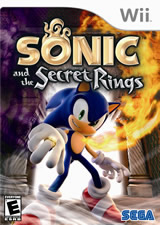 There used to be a time when each new Sonic The Hedgehog release was met with intense anticipation. In 1991, the world was introduced to the blazingly fast gameplay, smart level design, and vibrant graphics the series would become known for. And while I’ll always love my time with the original game, each subsequent release upped the ante. Sonic 2 added more challenge and a second player, Sonic 3 added more variety, and Sonic & Knuckles allowed me to play three Sonic games in an entirely new way. Yep… Sonic The Hedgehog stood atop the world of gaming and helped the Genesis compete, and even lead the 16-bit market.
There used to be a time when each new Sonic The Hedgehog release was met with intense anticipation. In 1991, the world was introduced to the blazingly fast gameplay, smart level design, and vibrant graphics the series would become known for. And while I’ll always love my time with the original game, each subsequent release upped the ante. Sonic 2 added more challenge and a second player, Sonic 3 added more variety, and Sonic & Knuckles allowed me to play three Sonic games in an entirely new way. Yep… Sonic The Hedgehog stood atop the world of gaming and helped the Genesis compete, and even lead the 16-bit market.
Giving It the Old College Try… Again
Unfortunately, the transition to 3D wasn’t a smooth one for Sega’s blue mascot. In 1999, Sonic Adventure for the Dreamcast was released to a large amount of critical praise, yet it hasn’t exactly aged well. The game and its successors Sonic Adventure 2, Sonic Heroes, and to an extent Shadow the Hedgehog have had a number of fundamental issues that Sega hasn’t seem interested in solving. Some of these afflictions included terrible camera systems, sloppy controls, and graphical glitches. Worst of all, almost every issue imaginable, save the visuals, seemed to culminate in the release of Sonic The Hedgehog for the Xbox 360 and PS3, a game that was supposed to put the franchise back on track.
While Sonic has seemingly worsened in 3D, the series has flourished in recent 2D offerings. Thanks to both the Game Boy Advance and Nintendo DS, fans of the Blue Blur have been able to play “true” Sonic games. This raises an important question: is it possible to create a 3D Sonic The Hedgehog game that stays true to its 16-bit roots? The answer came in the form of Sonic and the Secret Rings, released for the Nintendo Wii. And the answer is YES.
Where Sonic and the Secret Rings really sets itself apart from and improves upon previous iterations is its gameplay. Rather than presenting a free-roaming 3D word, Sonic and the Secret Rings uses an “on-rails” approach; this achieves in conveying the sense of speed Sonic is known for. Sonic constantly runs forward, on a set path, and within this set path is a limited amount of space to move from left to right. When I first learned of this approach I worried that the gameplay would be limited and overly simplistic. I’m happy to report that I was worried over nothing. Not only does the on-rails gameplay closely mimic the speed and feel of the 2D games, but it also comes close to completely solving Sonic’s infamous camera issues. Because there is a limited amount of area that players can explore the game’s camera rarely has any problem viewing the action. The only issue I encountered here was when moving backwards. You would think that walking backwards would automatically readjust the camera to pan-out, but it doesn’t. More times than not the camera will just stick to Sonic’s back, not allowing players to see enemies behind them.
Adding to the mix is the Nintendo Wii’s motion-sensing controller, which allows for steering, attacking, and other special in-game actions. To move left or right you simply tilt the controller (held in its NES position) in that direction. It takes some getting used to, but for the greater part of the game it works nicely. Attacking is done by thrusting the controller forward when an enemy is targeted. This is perhaps my favorite aspect of the overall design. It feels natural, fun, and proves that motion control can actually be BETTER than standard control. Other motion-specific actions feel appropriate in context, rather than gimmicky. A great example of this would be when Sonic launches himself from a catapult. To do this, the player needs to enter the catapult, pull backwards on the controller, and then lunge forward. Not only does this work, but it makes perfect sense. Sonic and the Secret Rings takes the odd pairing of Sonic and Arabian Nights and introduces gamers to a unique setting for the series. The game centers around Sonic and Shahra the Ring Genie and their quest to rid the world of the evil Erazor Djinn. To do this, Sonic must travel to seven distinct areas and find the seven “World Rings.” Along the way he’ll meet up with several familiar characters, all in decidedly unfamiliar roles. While the setting and plot might be a little foreign at first, it ends up feeling fresh and welcomed.
As Difficult as It Is Fast
There are two main modes of play offered: single-player and party. The single-player experience is the real meat of the game, and it’s a lengthy quest. Each level is broken down into missions, some necessary, some not. The missions provide a bit of variety, but it doesn’t always work. The game is at its absolute best when you’re speeding through the levels. Having to play through a mission where you run in a tight circle over and over until you collect ninety-nine rings just doesn’t fit well. It feels like a good amount of the missions were created to artificially lengthen the game.
Of course, you will want to finish as many missions as possible to collect experience points. Experience points are given out after completing a mission. Speed, damage taken, and other factors all contribute to how many points you earn. These points can be traded in for upgrades such as faster speed, quick starts, and tighter turning. But while tweaking Sonic later in the game can be great fun, much of the early upgrades are absolutely ridiculous. You actually have to use experience points to get Sonic to move left and right smoothly. This results in things feeling much more sloppy in the beginning stages, and it becomes almost impossible to defeat certain challenges until later on. I don’t appreciate having to level-up my character just so he plays as he normally should.
Visually, Sonic and the Secret Rings sets a new precedent for the Wii. The game looks vibrant and beautiful without the aid of hi-definition. Everything in the game looks very polished; textures are detailed, water is stunning, draw distance is far, and slow down is minimal. It’s great to see Sega put forth such a great early effort for the Wii. Unfortunately, the audio maybe the worst aspect of the game. The sound effects are perfectly fine, but the music is just awful. Each level (not to mention the menu screen) has a different cheesy metal track playing in the background. I’m not just talking about long guitar solos either; full-on vocals nearly ruin the entire experience. I really don’t understand why Sega keeps going with this kind of music. The voice work is nearly as bad as the music. I actually didn’t mind Sonic much, but every other character in the game sounds amateurish and overly dramatic.
Welcome Back, Old Friend
One final issue I have with this game is its multi-player mode. The “party” mode feels and plays like a lot of other recent Wii release; it’s a number of gimmicky mini-games bunched together to show off the new Wii remote. Out of the forty games available, only a handful are worth playing through. I know that it’s meant to be icing on the cake, but I still would’ve liked to see a little more effort put into it.
Sonic and the Secret Rings may very well be the best 3D Sonic The Hedgehog game to date. Sega has finally achieved translating Sonic‘s classic gameplay to a next generation console, but while the game is good fun, it is most certainly flawed. There are still a few outstanding camera issues that need to be resolved, and the controls could use some polish. Still. it’s great to see Sonic truly shine again. With any luck, this game will sell well and warrant a sequel. Sega’s on the right path, it’s just not quite there yet.

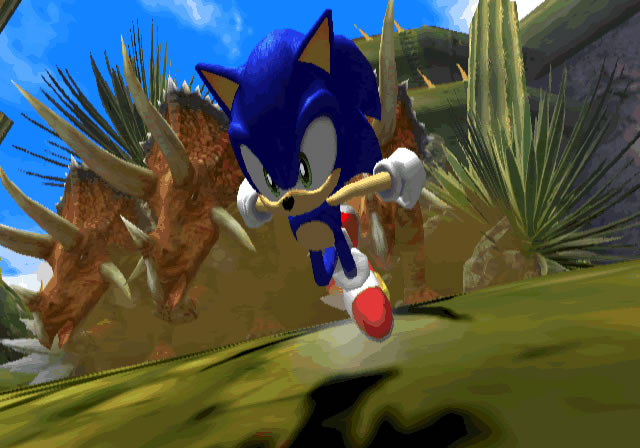
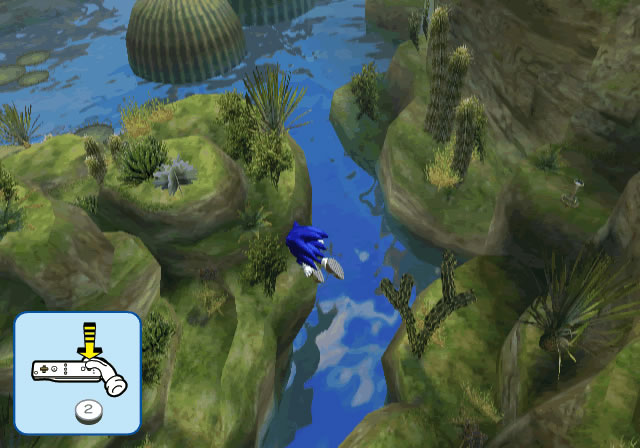
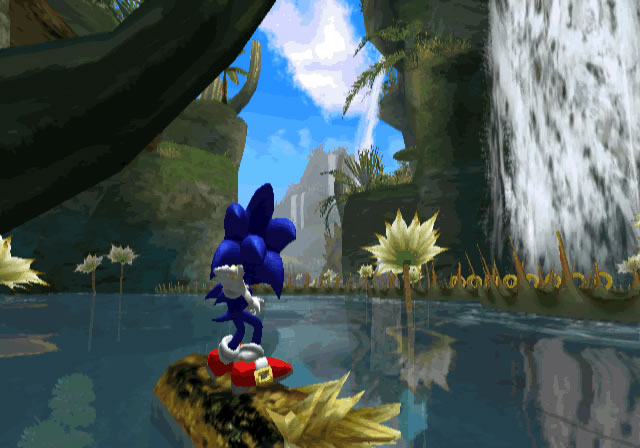
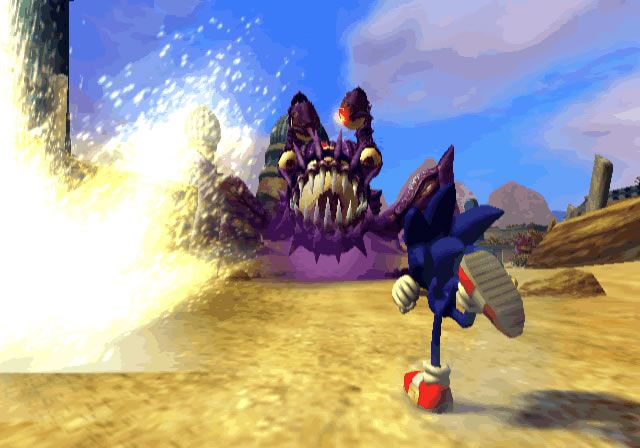

Recent Comments